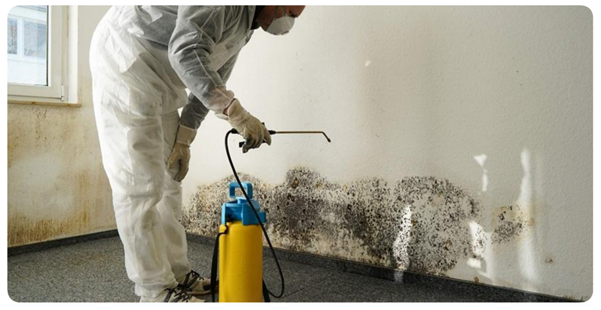How to Animate Realistic Animal Behavior in 3D
Animating realistic animal behavior in 3D is a challenging yet rewarding task that requires a deep understanding of both animation principles and animal biology. Creating believable and lifelike animal movements can significantly enhance the storytelling and visual appeal of animations. This blog will guide you through the process, offering tips and techniques to help you achieve realism in your animal animations. We’ll also explore the role of 3D animation services and the unique opportunities provided by collage animation.
Understanding Animal Anatomy and Behavior
Before you start animating, it’s crucial to have a thorough understanding of animal anatomy and behavior. Study the skeletal and muscular structures of the animal you want to animate. This knowledge will help you create accurate and realistic movements. Observe how animals move in real life by watching videos or observing them in person. Pay attention to their gait, posture, and how they interact with their environment.
Key Points to Study:
- Skeletal Structure: Understand how the bones are connected and how they move.
- Muscle Function: Learn how muscles contract and extend to create movement.
- Natural Behavior: Observe the natural behaviors of the animal, such as hunting, grazing, and social interactions.
Planning Your Animation
Planning is a crucial step in the animation process. Before you start animating, create a storyboard or an animatic to map out the sequence of actions. This will help you visualize the movement and identify any potential issues early on.
Steps in Planning:
- Research and Reference: Gather references from videos, books, and online resources.
- Storyboarding: Sketch out the key poses and actions.
- Animatic: Create a rough version of the animation to get a sense of timing and flow.
Rigging Your 3D Model
Rigging is the process of creating a skeleton for your 3D model that can be animated. A well-rigged model is essential for creating realistic movements.
Key Elements of Rigging:
- Skeleton: The bone structure that will drive the animation.
- Controls: User-friendly controls that make it easy to manipulate the skeleton.
- Skinning: The process of attaching the 3D model to the skeleton so that it moves naturally.
Animation Principles
Applying traditional animation principles is crucial for creating realistic animal behavior. These principles, initially developed for 2D animation, are equally important in 3D animation.
Key Principles:
- Squash and Stretch: This principle adds weight and flexibility to the animation. Even though animals have rigid bones, their muscles and skin can stretch and compress.
- Anticipation: Before an animal moves, it often prepares by shifting its weight or tensing its muscles.
- Follow Through and Overlapping Action: Different parts of the animal’s body will move at different rates and continue to move after the main action has stopped.
- Arcs: Animals move in natural arcs rather than straight lines.
- Timing and Spacing: The speed and spacing of movements add to the realism. Animals have varied speeds depending on their actions, like walking, running, or jumping.
Motion Capture
Motion capture (mocap) technology can be a valuable tool for animating realistic animal behavior. By capturing the movements of real animals, you can transfer those movements to your 3D models.
Benefits of Motion Capture:
- Accuracy: Captures intricate details of movement that are hard to replicate manually.
- Efficiency: Speeds up the animation process.
- Realism: Provides a natural and lifelike quality to the animation.
Using Motion Capture:
- Set Up the Mocap System: Arrange cameras and markers.
- Record the Animal’s Movements: Capture a range of actions and behaviors.
- Apply the Data: Transfer the captured data to your 3D model.
Adding Personality and Emotion
To make your animal animations more engaging, add personality and emotions. Animals can exhibit a wide range of emotions, from joy and curiosity to fear and aggression.
Techniques for Adding Personality:
- Facial Expressions: Even subtle changes in the eyes, ears, and mouth can convey emotions.
- Body Language: Tail, ear, and body positions can express different states of mind.
- Behavioral Cues: Specific actions like grooming, playing, or hunting add depth to the character.
Enhancing Realism with Dynamics and Physics
Incorporating dynamics and physics simulations can enhance the realism of your animations. For example, simulating fur, muscles, and skin can add a layer of authenticity to your characters.
Dynamics and Physics Techniques:
- Fur and Hair Simulation: Use tools to simulate the natural movement of fur or feathers.
- Muscle Systems: Create muscle rigs that deform realistically under the skin.
- Physics-Based Animations: Apply physics simulations for actions like falling, colliding, or interacting with objects.
Lighting and Rendering
Proper lighting and rendering are essential to bring your animated animal to life. Realistic lighting can highlight the texture and details of your 3D model, making it appear more lifelike.
Lighting Tips:
- Natural Lighting: Mimic natural light sources to create a believable environment.
- Shadows: Add soft shadows to enhance depth and dimension.
- Textures: Use high-quality textures for fur, skin, and other surfaces.
Rendering Techniques:
- Global Illumination: Simulates how light interacts with surfaces for a more realistic look.
- Ambient Occlusion: Adds depth by simulating the soft shadows that occur in creases and corners.
- Subsurface Scattering: Essential for rendering realistic skin and fur.
Post-Production and Refinement
After completing the initial animation, refine it through post-production. This phase includes polishing the movements, adding special effects, and ensuring everything looks cohesive.
Post-Production Steps:
- Polishing: Refine the timing and spacing of movements.
- Special Effects: Add effects like dust, water splashes, or other environmental interactions.
- Final Rendering: Render the animation with high-quality settings for the best visual results.
The Role of 3D Animation Services
Engaging professional 3D animation services can elevate the quality of your project. These services provide expertise, tools, and resources that can save time and enhance the final product.
Benefits of 3D Animation Services:
- Expertise: Access to experienced animators and technical directors.
- Advanced Tools: Use of state-of-the-art software and equipment.
- Collaboration: Work with a team to bring your vision to life.
Incorporating Collage Animation
Collage animation, a technique where different visual elements are combined to create a single animation, can add a unique artistic flair to your projects. This technique can be used to create stylized and visually appealing animal animations.
Techniques for Collage Animation:
- Mixed Media: Combine 3D models with 2D elements, photographs, and textures.
- Layering: Use layers to create depth and complexity.
- Experimental Styles: Explore different artistic styles to enhance the visual appeal.
Conclusion
Animating realistic animal behavior in 3D requires a blend of technical skills, artistic talent, and a deep understanding of animal biology. By studying animal anatomy, planning meticulously, and using advanced techniques like motion capture and physics simulations, you can create lifelike and engaging animations. Leveraging the expertise of 3D animation services and incorporating unique styles like collage animation can further enhance your work. With dedication and practice, you can master the art of bringing animals to life in the digital world.
By following these guidelines, you can create stunning and realistic animal animations that captivate and engage your audience. Whether you are working on a film, a video game, or an educational project, the principles and techniques discussed in this blog will help you achieve your goals and push the boundaries of what’s possible in 3D animation.



